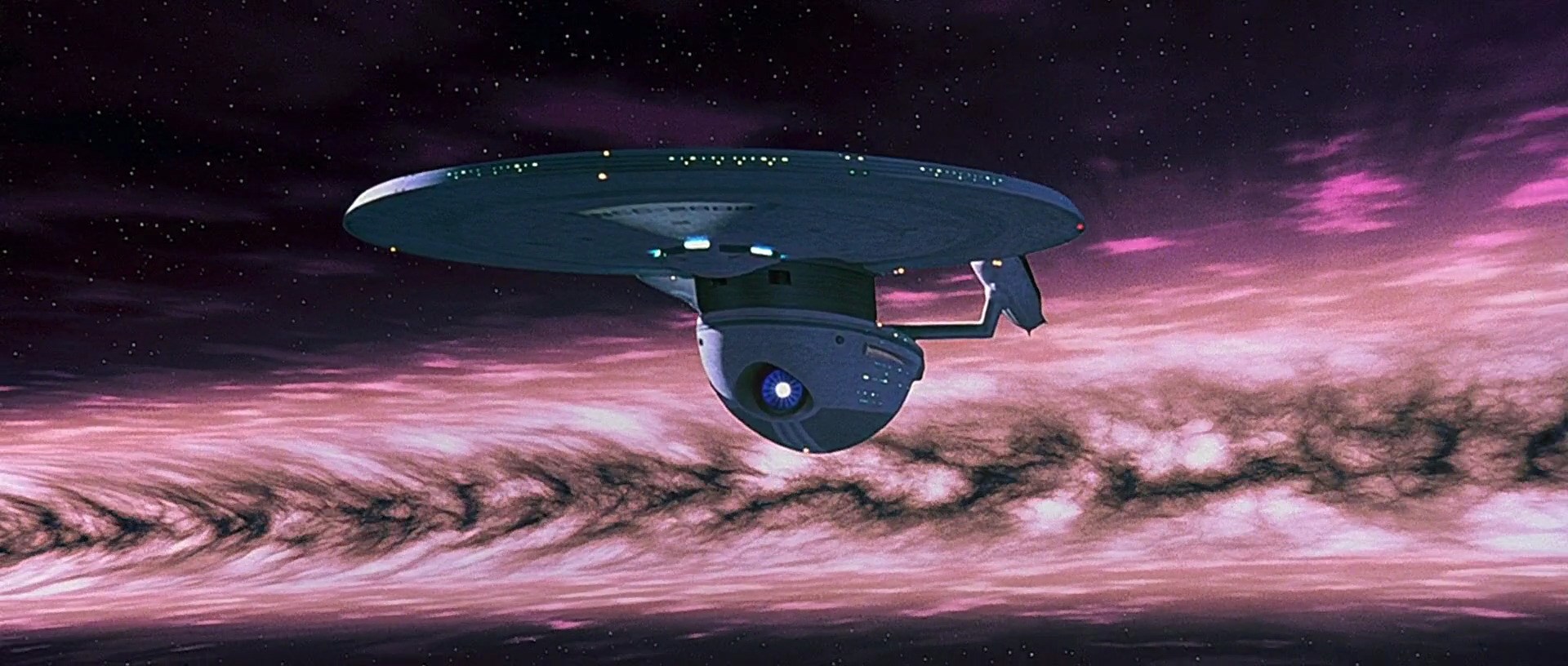
The USS Excelsior weathers the shock wave generated by the explosion of Praxis. / Fair use, Wikimedia Commons
In 1991, Star Trek VI: The Undiscovered Country, took to the screens. This would become William Shatner’s final voyage on the bridge of the Starship Enterprise as Captain James T. Kirk.
The premise of the movie is that the Klingon moon Praxis, a key energy production facility, explodes, leading to radioactive contamination which will destroy the ozone layer of the Klingon home world. As a result, the Klingons propose opening a dialogue for peace with their long-term enemies, the International Federation of Planets.
If this sounds familiar, it’s because the plot is an allegory for the destruction of Chernobyl followed by the collapse of the Soviet Union. Leonard Nimoy, who played Mr Spock, proposed the story based on the idea of what if The Wall (as in the Berlin Wall) came down in space. The character of the Klingon Chancellor Gorkon was based on Mikhail Gorbachev.
Of course, people on Gorkon’s team conspired to displace him (as the Russian military tried to displace Gorbachev), but at the end, the walls came down.
So peace was brokered and they lived in relative peace and happiness for the next while.
But Klingons are a warlike race. Young Klingons are expected to become warriors before they're old enough to say "warrior," and there are important rituals to be performed along the way. According to Memory Alpha , first comes the Rite of Ascension. In this short, to-the-point ceremony, a Klingon child lights a kor'tovacandle, which signifies the fire burning in the heart of a warrior, as a declaration that the fire is now in their heart as well.
So, some 25 years after they brokered peace, Klingons and the Federation went back to war.
The end.
